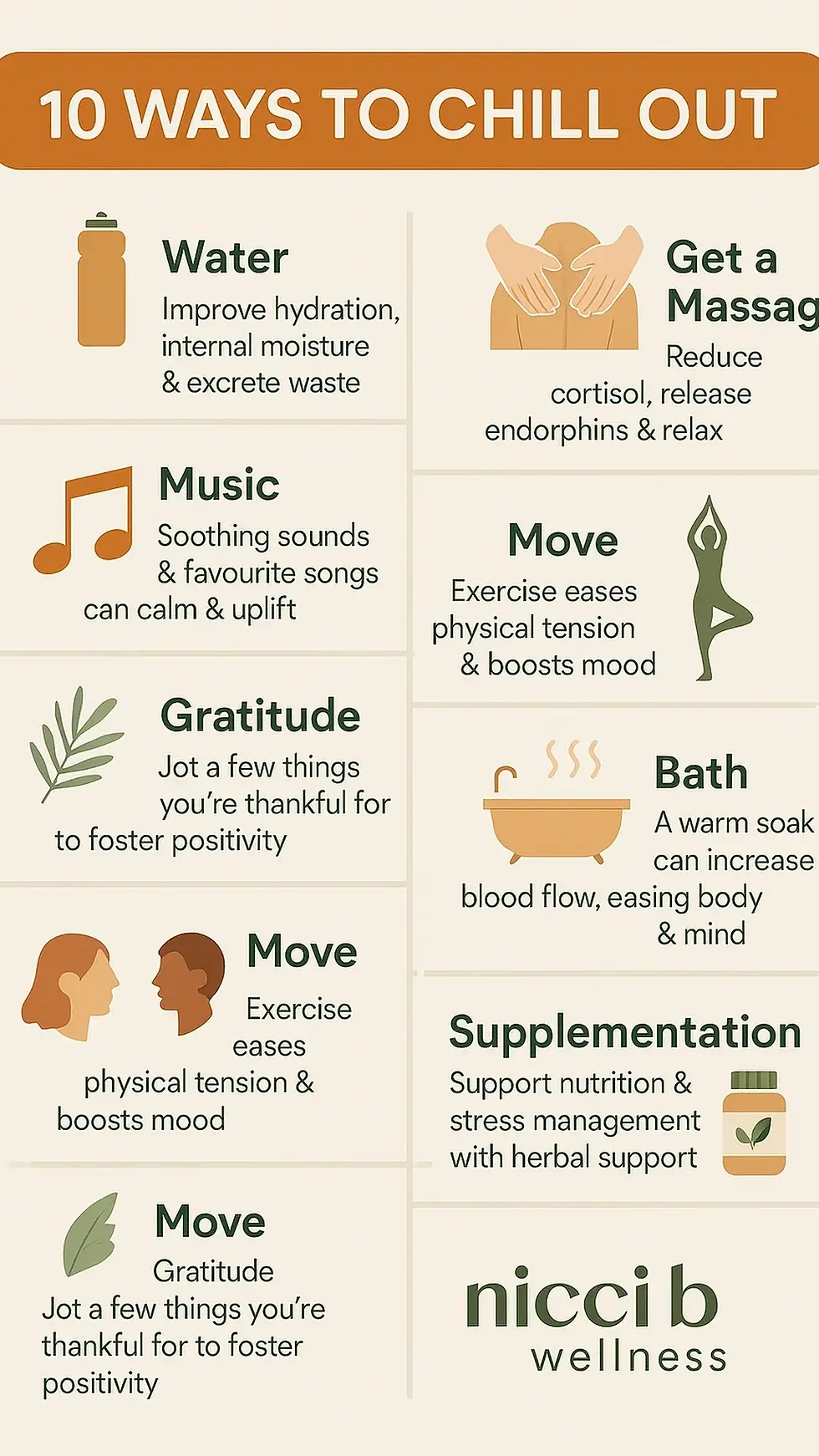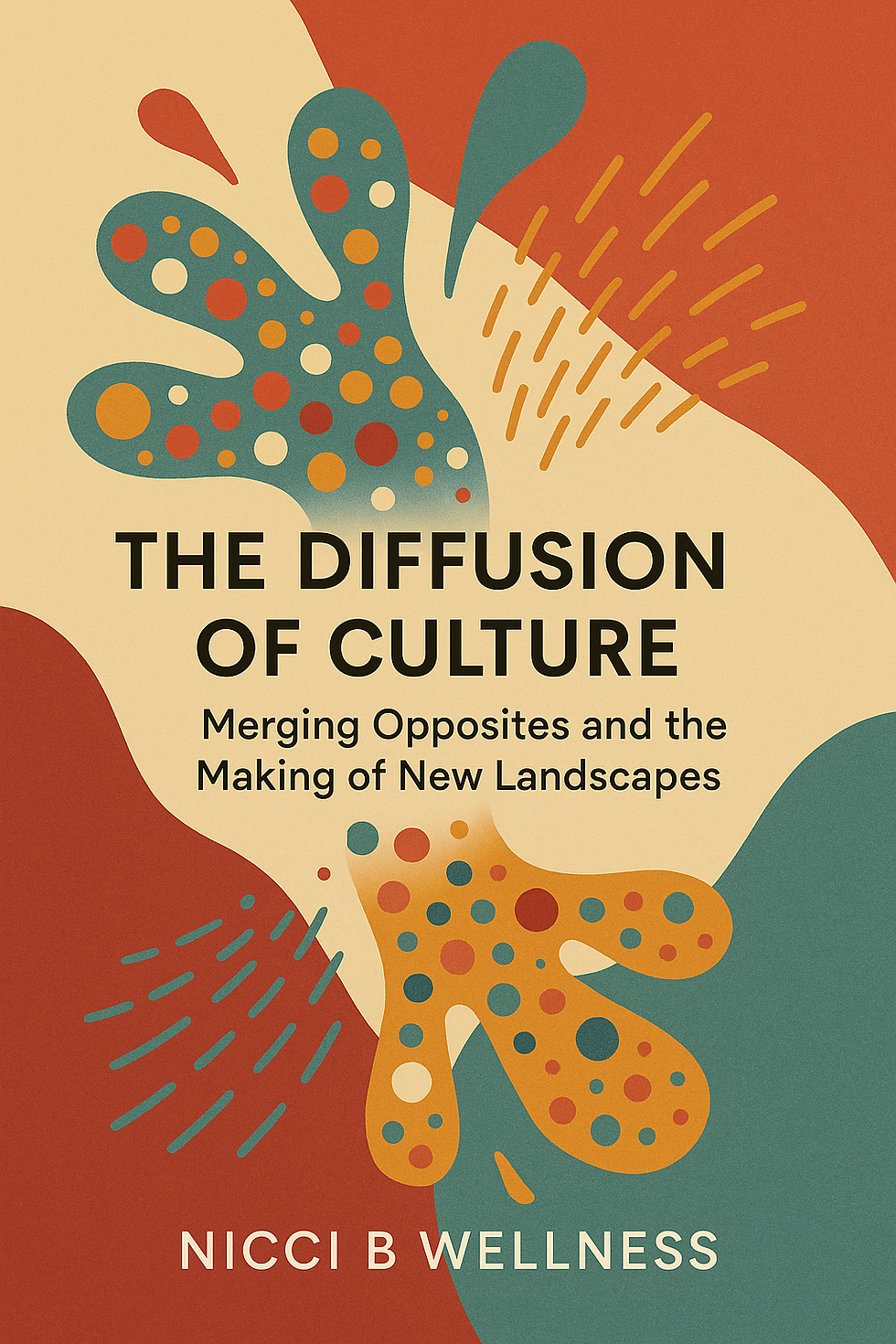The ABC of Wellness
- Nicci B

- Oct 20
- 3 min read
The ABC of Wellness: A → Abolish, B → Balance, C → Control

In the world of wellbeing, too many “quick fixes” and one-size-fits-all promises obscure what’s real: the body is a complex system, and sustainable health comes from thoughtful action, not shortcuts.
Here’s one way to think about it — three pillars I call Abolish, Balance, Control.
A is for Abolish
What are we abolishing?
Not the impossible goal of “perfect health,” but the undue burdens we put on our body:
things like unmanaged toxin exposure, unresolved gut issues, parasitic or microbial imbalances, and under-supported liver/gut detoxification pathways.
There’s increasing evidence of a so-called gut-liver axis — the two are intimately connected, and disturbances in gut microbiota (the community of microbes in our intestines) influence liver health.
For example, one review describes how bacterial metabolites and gut‐derived components travel via the portal vein to the liver, affecting immunity and metabolism.
Environmental exposures (air pollution, industrial toxins) play a role in liver disease risk.
On the flip side: some popular “parasite cleanses” and extreme detox protocols lack solid evidence — and may even carry risks.
For example, the source cautions that “untested products … may contain toxic compounds.”
What you can do (practical tips):
Encourage assessments of gut health: regular bowel habits, diversity of diet (plant-rich), mindful of overly processed foods.
Focus on liver-supportive behaviours: moderate alcohol, avoid known hepatotoxins, ensure rest and recovery.
Rely on evidence-based detoxification (mostly: good sleep, hydration, plant-rich diet) rather than extreme cleanses.
Use the metaphor of “clearing the path” for the body’s systems: not pure emptying, but smart clearing so they can function.
B is for Balance
Once you’ve started reducing what burdens the system, you shift to providing what the body needs.
This is the “balance” phase: restoring order by offering optimal nutrition + lifestyle habits.
Nutrition matters beyond calories: a diet rich in fibre, plants, whole foods supports gut health and nutrient delivery. One study found that dietary fibre helps nutrient management and links to gut-liver health.
Food and mood are connected: a review showed that poorer quality diets are linked to low mood, and conversely that healthier diets may improve mental health.
Lifestyle medicine frameworks point to multiple pillars: nutrition, movement, stress management, sleep, social connection.
Practical habits to emphasise:
Emphasise variety: vegetables, fruits, legumes, whole grains, nuts/seeds.
Move regularly: gym sessions, nature walks, anything that fits your love of nature and movement.
Habits around sleep, rest, social connection: don’t let nutrition alone carry the load.
Routine check-ins: how is your gut feeling, energy levels, digestion, mood? These are signals of balance.
C is for Control
“Control” might sound harsh — we’re not striving for rigid perfection — but rather cultivating the capacity to manage stressors, regulate our responses, and maintain resilience. Because without this, all the best nutrition and detox strategies can get undone by chronic stress.
Stress has real physiological effects: it alters eating behaviours, mood, metabolic responses. One study notes that stress and diet are “a two-way street.”

Exercise helps. The Mayo Clinic reports that “almost any form of exercise … can act as a stress reliever.”
Good sleep, plant-rich diet, regular movement, and social connection are all recommended by the Harvard Health Publishing team for stress resilience.
Control-oriented actions:
Build a stress-management toolkit: meditation/mindfulness, breath work, time in nature (which you love), mobility or yoga.
Monitor your recovery indicators: sleep quality, heart-rate variability (if you track), mood and irritability.

Prioritise routines that buffer stress: e.g., fixed mealtimes, “unplug” intervals, movement breaks.
Accept what you cannot control (external events, warranty for universal calm) but focus on what you can (your habits, responses, environment).
Bringing it together
A → Abolish the unnecessary burdens.
B → Balance your inputs and habits to give your body what it needs.
C → Control the context and responses so the system can thrive.

Final thought:
Real wellness isn’t a checklist of perfect behaviours.
It’s a dynamic process of clearing space, reinforcing strength, and maintaining resilience.
If you invest in all three — abolish, balance, control — the system becomes more robust, flexible, and sustainable.



Comments